St Colmon (Arnsheen Barrhill & Colmonell) Parish Church
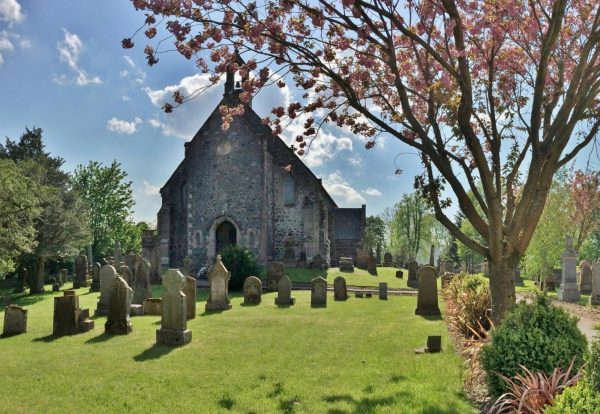
At least three Churches have existed on this site since around 1179 and there are records of Ministers dated as far back as the 1400s. By the end of the first millennium the church in Colmonell was well established. A charter of 1160 states that Uchtred, Lord of Galloway, granted livings of Colmonell to the Abbey of Holyrood, Edinburgh, and the church later came under the jurisdiction of Glasgow Cathedral. The vicars of Colmonell were clergy of the Cathedral and had a manse in Glasgow close to Provand’s Lordship. A document of 1446 in Glasgow City Archives records that Sir Richard Gardenar, the Vicar of Colmanell, was the keeper of the lights around the tomb of St Kentigern in the cathedral. The names of six of the pre-reformation Vicars, dating from 1438, are inscribed on the Millennium Windows on either side of the organ, along with all those of the Ministers of Colmonell since the Reformation.
The present church is the third on the site overlooking the river at the west end of the village, with the first recorded church built in 1591. The keystone of this church, fortunately preserved by the builders of the new, can be seen high on the outside of the south wall, with the inscription “Heir is ane hous bult to serve God”. The church appears as Kamenel Kirk on Blaeu’s Atlas of Scotland of 1654.
The church was substantially rebuilt from foundation level in 1772, the earlier building having become in a poor state of repair. Eventually this building became too small for the congregation and was recast in 1849 to seat 400 worshippers. To avoid disruption to weekly worship the new church was built around the old – when completed, the old one was demolished.
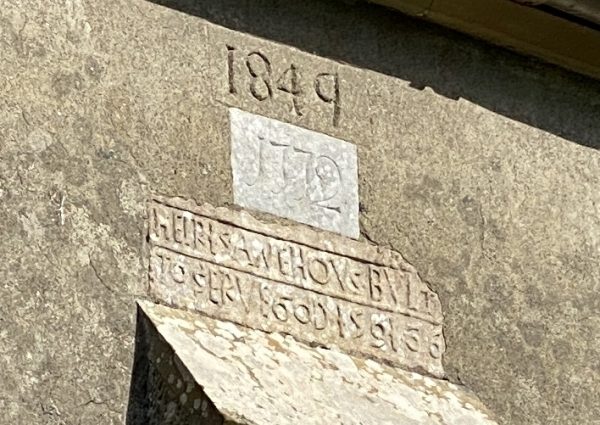
In 1899 the Church was restored and extended by the architect Robert Lorimer, and the chancel renovated with linenfold panelling and fine carvings. A full height extension was made to the east gable, and an external stair to the choir gallery. The Grade 1 listed Norman and Beard pipe organ was installed in 1908, the carved organ screen also by Lorimer. He was also influential in the choice of two of the most outstanding stained-glass artists of the Arts and Crafts Movement – Louis Davis and Douglas Strachan – for several of the windows installed between 1900 and 1922.
The Church and Churchyard were listed as grade B in 1971. (A building of regional or more than local importance, or major examples of some particular period, style or building type which may have been altered.)
The name of Colmonell village is derived from the Church, which in the 12th century was called Kirk-Colmonell in memory of the patron Saint Colmon of Ella. St Colmon of Ella is reputed to be a nephew of St Columba and brought Christianity to the area around the year 600AD.
St Colmon Church in Colmonell is now the spiritual home for a large parish which includes the villages of Lendalfoot, Colmonell, Pinwherry and Barrhill. Records show that in 1850 the Kirk Session of Colmonell were trustees of Arnsheen Chapel in Barrhill, with a Committee of Management elected each year. In 1872 Colmonell and Arnsheen Barrhill Churches were formally disjoined and from May 1873 Arnsheen Church was recorded with a Kirk Session and Trustees. A new church was built in 1887 to replace the small chapel. In 1982 it was linked again to Colmonell Church, and on 5th June 2007 the two churches were united to form St Colmon (Arnsheen Barrhill & Colmonell) Parish Church. On the 3rd June 2008 St Colmon Parish Church was linked with Ballantrae Parish Church.
The original manse for the church in Colmonell was built on the glebe, close to the Kirk Hall. The last manse was built in 1822 at the end of Manse Lane and was sold in 2009 following the parish linking.
Churchyard
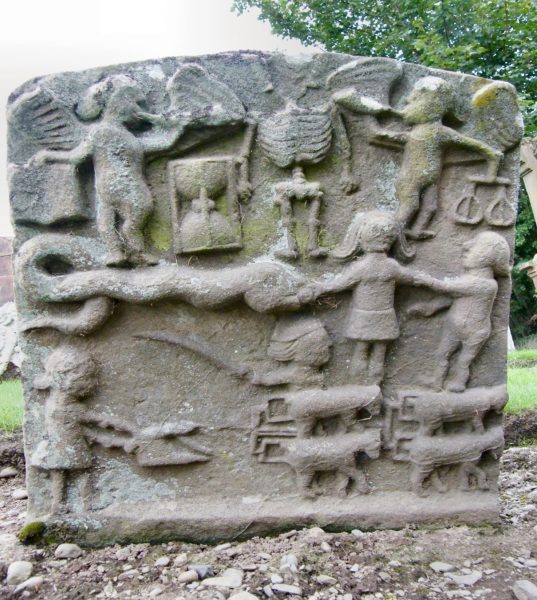
Adam and Eve Stone 1758
The Resurrection depicted as a skeleton and hourglass with two trumpeting angels holding the Bible and scales of justice, the Fall seen as the serpent tempting Adam and Eve, and farming represented by two men with four oxen pulling a plough. In memory of Andrew McKissock of Prieston, and McKissocks of Knockbain and Knockdaw.
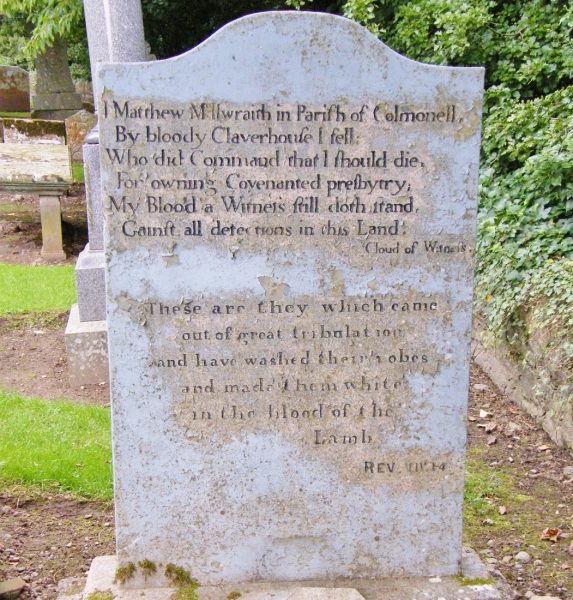
The Covenanter’s stone
The churchyard holds many early gravestones, including that of a Covenanter named Matthew McIlwraith. Covenanters were named after two documents, the National Covenant of 1638 and the Solemn League Covenant of 1643 which gave freedom to the Church to settle its own government and forms of worship.
The blue painted gravestone erected in the eighteenth century to the memory of James McCracken has on its reverse, the verse commemorating the death of Matthew McIlwraith. Matthew McIlwraith was pursued into a glen on the farm of Dangart near Colmonell and shot. Two young women eventually came, wrapped the corpse in a grey plaid, and carried it to Colmonell Churchyard for burial.
The McCracken family were permitted to use the covenanter’s grave provided they renewed the epitaph. The earliest inscription to the McCrackens is 1772 and so it must have been after this that the stone was erected. The original epitaph is recorded in A Cloud of Witnesses and it is from this text that the stone mason quotes.
“These are they which came out of great tribulation and have washed their robes and made them white in the blood of the Lamb REV VII 14”
Sir John Snell
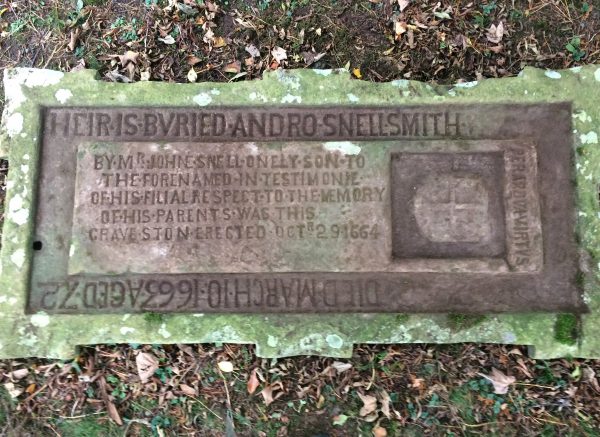
Snell Gravestone Erected 1664
1663
The earliest recorded death in the Churchyard, on 10th March 1663, is that of Andrew Snell, a blacksmith at Almont near Pinwherry. His son, Sir John Snell (1629 – 1679) is commemorated by a memorial on a small hill at Almont Farm.
Sir John joined the royalists during the English civil war, and fought in several battles, including the Battle of Worcester. He took refuge in Cheshire, where he became clerk to Sir Orlando Bridgeman and was then raised to the offices of court-crier and seal-bearer. Later he managed the Scottish estates of the Duke of Monmouth. He died at Oxford in 1679 and was buried in St Cross Church, Oxford. He was founder of the Snell Exhibitions at the University of Oxford and left a bequest to send students from the University of Glasgow to an Oxford college or hall, which continues today.
Sir John Snell is commemorated by a plaque over the vestry door in the Church and a gravestone in the Churchyard.
Knockdolian Vault
Set against the west wall of the kirkyard. Initials of Fergus McCubbin and Margaret Kennedy above the gate, dated 1663. Note early advertising on righthand side of door pillar – “This work wrought by Johne Dixon Masoune, Ayr”. Memorials within the vault to members of the McConnel family of Knockdolian.
Full details of the Churchyard can be found in the booklet “Colmonell Kirkyard Monumental Inscriptions” published by Alloway and Southern Ayrshire Family History Society.
Stained Glass

The Good Shepherd Window by Douglas Strachan
The church benefits from a wide range of high quality stained glass windows by various artists including:
Ballantine and Gardiner – the window inscribed “thy brother shall rise again.”
James Humphries Hogan who worked for James Powell and son signed his work with a single monk and this is seen on the window depicting St Colmon of Ella.
Douglas Strachan – the shepherd with a sheep on his shoulders.
Louis Davis
The most significant windows are those by Louis Davis (1860–1941). Of Davis’ legacy, it was said: “His colour and design satisfy the sense of beauty, and the actual craftsmanship will always be a wonder to those who understand the art of glass-making.”
In 2013 the stained glass historian and author Peter Cormack MBE FSA visited the Church with the Chairman of the British Society of Master Glass-Painters and the Editor of The Journal of Stained Glass who described the windows by Louis Davis as being “renowned as some of the finest of their era”. These windows were completed through James Powell and Sons between 1908 and 1920:
“The Nativity” 1909 – 1910. The window depicts Joseph and Mary who holds the infant Jesus whilst two angels kneel in adoration. The Dove of the Holy Spirit sits on the stable roof with two cherubim and above two angels hold the star which shines down on the scene below. “Gloria in Excelsis Deo et Terra Pax” (Glory to God in the highest and on earth peace) says the inscription and in the window’s lower panel, Davis depicts the “Fons Vitae” (Fountain of Life). The window is in memory of William McConnell who died in 1902 aged 93 and his wife Margaret Bradshaw McConnell who died in 1881 at the age of 57.
The three-light (triptych) window in the west wall entitled “The Sacraments; Praise; All the Works of God” 1909-10, donated by Robert Finnie McEwen of Bardrochat.
In the left-hand light, the Sacraments are represented by angels. One angel holds a chalice, “Calicem salutaris accipaiam et nomen domini invocabo”, (I’ll take the cup of Salvation and call upon the name of the Lord), whilst a second angel stands at a large font, “Confiteor unum Baptisma remissionem peccatorum”, (I confess one baptism for the remission of sin).
The centre light “Praise, with the Ascent of the Blessed to Heaven accompanied by Banners of Music” depicts men, women and children, lay and religious, monarchs and saints, including St Louis King of France and Robert Bruce, Earl of Carrick, ascending to the City of God, “Jerusalem Ecce Ascendimus”, (Behold we go up to Jerusalem).
In the right-hand light “All the Works of the Lord. The Sun, the Moon and the Stars, Wind and Snow, the Birds of the Air, the Fruits of the Earth, and a symbolic figure of Water, holding an Ark”. The ark is an allusion to the flood which was likened to baptism by the early Church. Below, figures offer up praise, including a shepherd who worked on Bardrochat, and his dog, “Masha” and school children representing the sons of the donor. Records say the donor of the triptych, Robert Finnie McEwen, is depicted in the window as a bishop. Others say the figure is Saint Ninian. In the background are the Hill of Knockdolian, Craigneil Castle, and “the hanging woods and fair holms of Stinchar, a pure river, clear as crystal”.
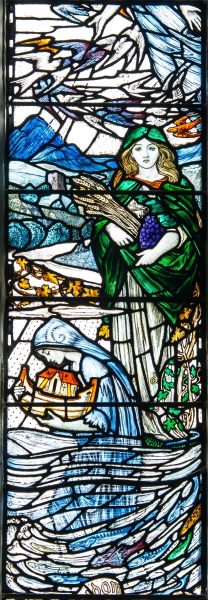
Detail of the right-hand light by Louis Davis
Also by Louis Davis – the two windows in the organ loft area behind the more recently added panels. To the left side of the organ a single light window has Grace depicted as rose petals falling and the window to the right of the organ has Praise depicted as incense rising “Omnis Spiritus Laudet Dominus” (Let every Spirit praise the Lord).
The two small windows in the porch are also attributed to Louis Davis.
The 2 stained glass panels set in front of the organ loft windows were commissioned by the Kirk Session to mark the Millenium in 2000. Catriona McKinnon designed the panels to complement the style and symmetry of the Louis Davis windows behind them and the cost was met by a very generous donation. The windows incorporate symbols of Christianity including the Celtic Cross, the Triquerta and Circle, the descending dove, Alpha and Omega and the letters IHS and the Star of Bethlehem. The seasons, the local environment and the wind of the Spirit are also depicted, and the top of each panel is inscribed with the names of all Ministers known to have served Colmonell since 1434.
For further information and illustrations of all the windows see the St Colmon church windows page.
Pipe Organ

In 1908 Norman and Beard of Norwich were commissioned to build the pipe organ. The organ casework by Robert Lorimer is of considerable historic value and the entire instrument has been awarded the highest grade possible from the British Institute of Organ Studies.
The organ has two manuals, eighteen stops, three couplers and full pedal board. It was refurbished in 2003 with the aid of a National Lottery grant and donations, and is in use at every service.
Also within the Church
The Font:
Finely carved wooden font donated in memory of Captain Peter Norman Tinn who died in 1942
Matchstick churches:
Jim Miller created the models of Arnsheen Barrhill Church and St Colmon Church using between 15,000 and 25,000 matchsticks in each model. He took up his hobby after Mansefield Church in Kilwinning, Ayrshire, was threatened with demolition in the mid 1990s.
Sanctuary Lamp:
Donated by Mrs Rodney Hazlitt in memory of her father, Dr W D Scott of Kirkhill 1998
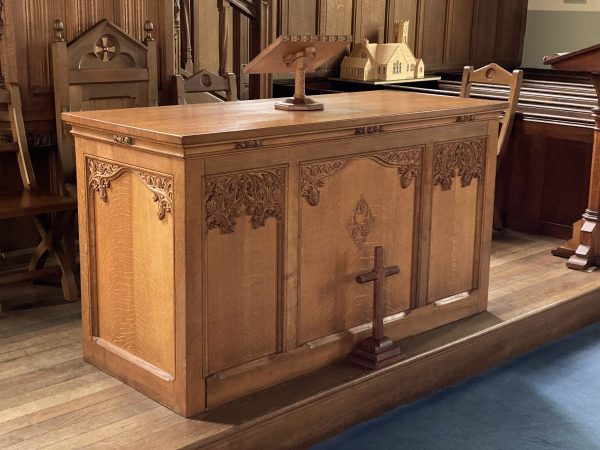
The Communion Table
Kirk Hall
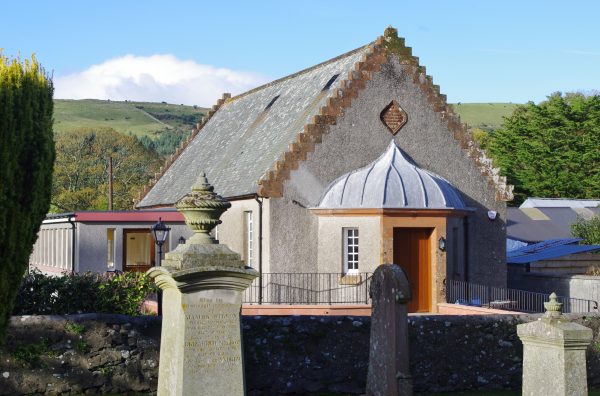
Kirk Hall built 1910. Extension 2013
Inscriptions over the main doors:
Interior:
UBI
ENIM SUNT
DUO VEL TRES
CONGREGATI
IN NOMINE MEO
IBI
SUM IN MEDIO
EORUM
WHERE
THERE ARE
TWO OR THREE
GATHERED
IN MY NAME
THERE
AM I WITH THEM
Matthew 18:19-21
Exterior:
AGNUS DEI
QUI TOLLIS PECCATA
MUNDI, DONA NOBIS
PACEM
LAMB OF GOD
YOU WHO TAKE AWAY THE SINS OF THE WORLD
GRANT US PEACE
John 1:29
Gallery:
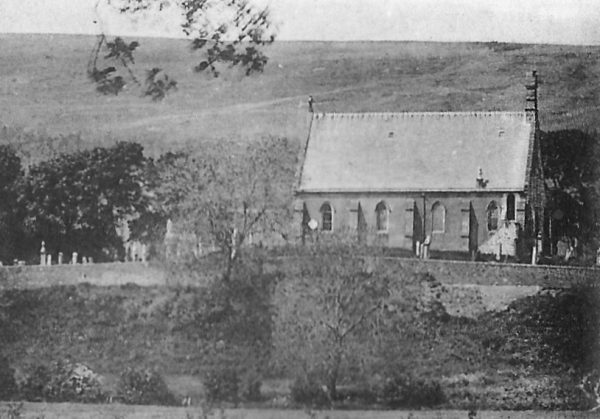
The church prior to 1899, before the extension to the east gable. New choir gallery steps can be seen on the south wall
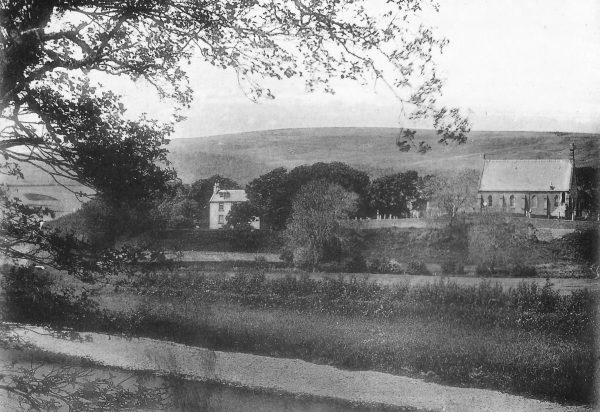
Manse and Kirk from the river prior to 1899

St Colmon Kirk c 1900
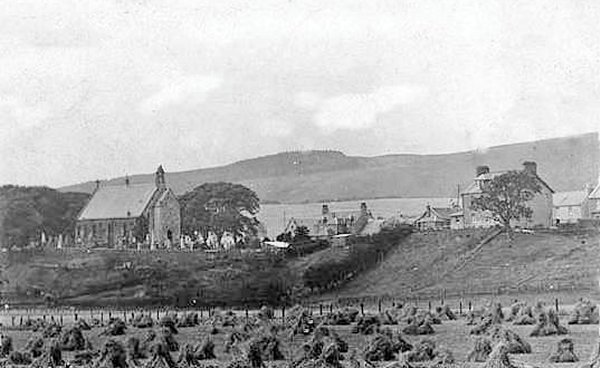
Colmonell village and the church c 1915
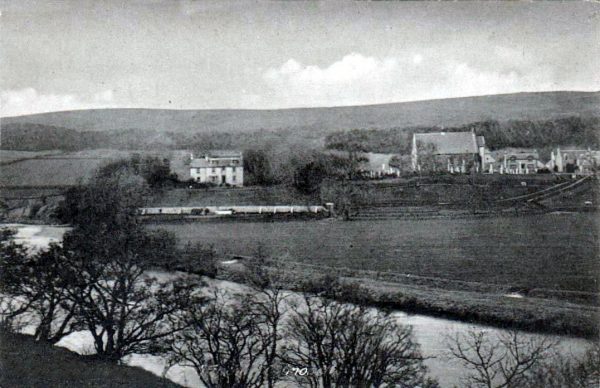
Colmonell Church and manse seen across the River Stinchar
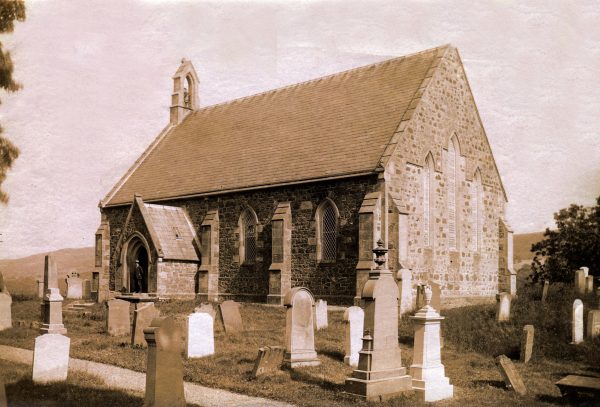
St Colmon Church date unknown. No cross on west gable
The previous 6 historic photos of the church are courtesy of Christine and Keith Brown
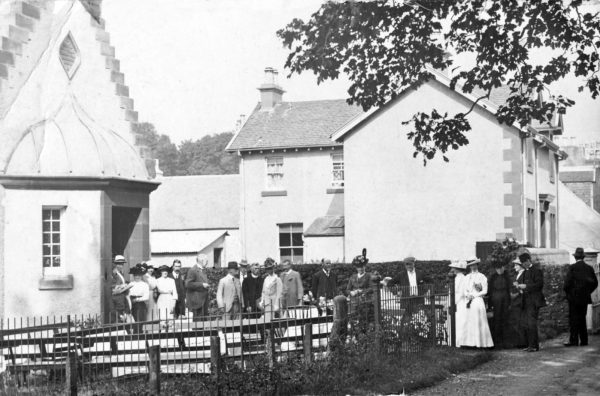
The occasion of the opening of the Kirk Hall 1910
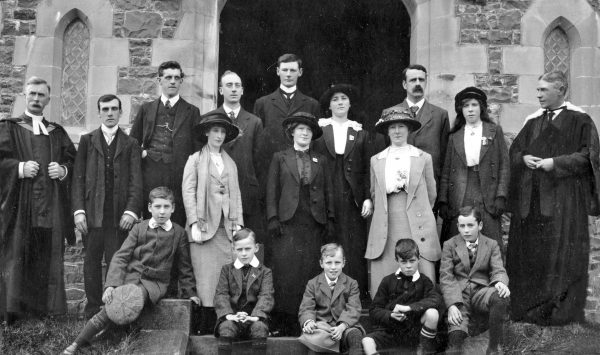
Some of the congregation on the church steps on the same occasion. 1910
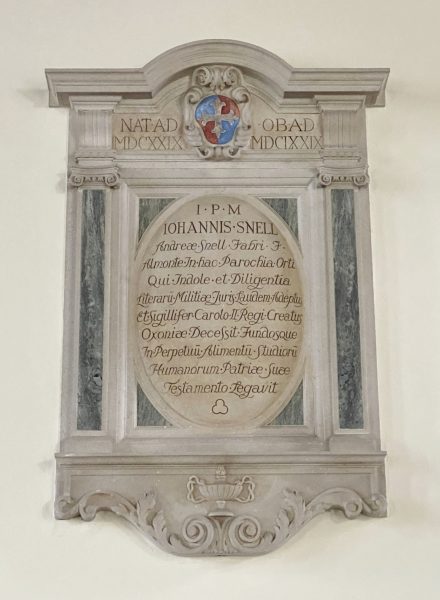
Memorial tablet to John Snell in the church, on the north wall
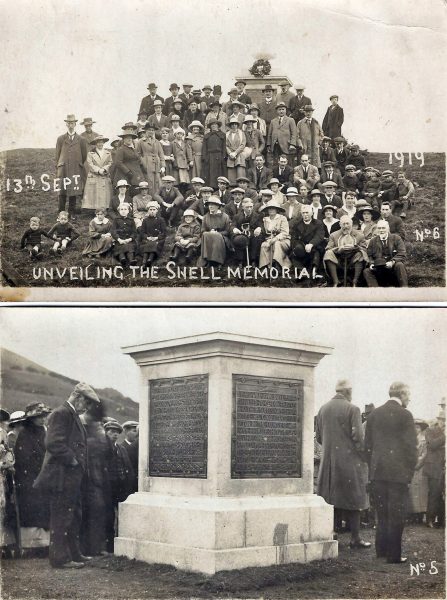
The unveiling of the Snell Memorial at Almont, Pinwherry 1919
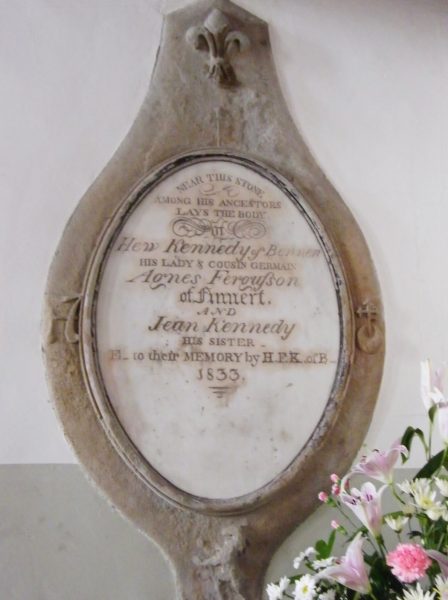
Memorial tablet on the north wall of the church
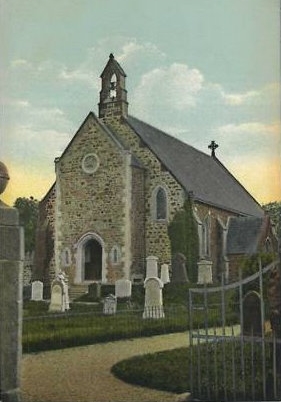
Probably c 1900, prior to new gates
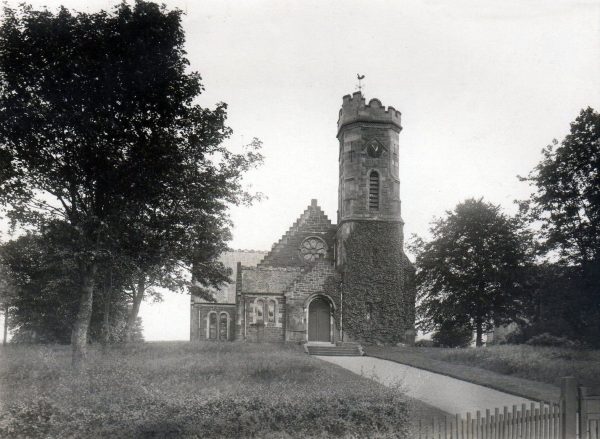
Arnsheen Church, Barrhill. Unknown date
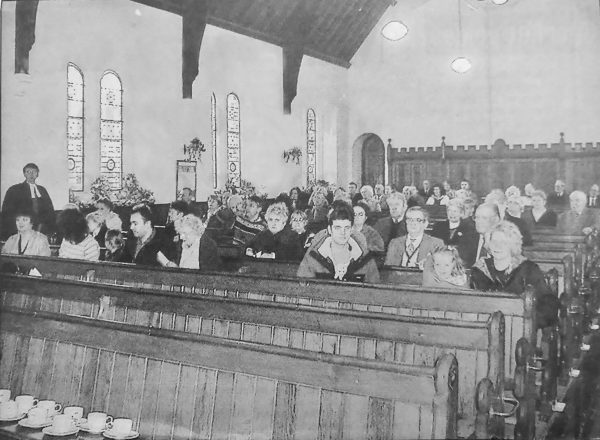
The last service held in Arnsheen Church 29.12.2002
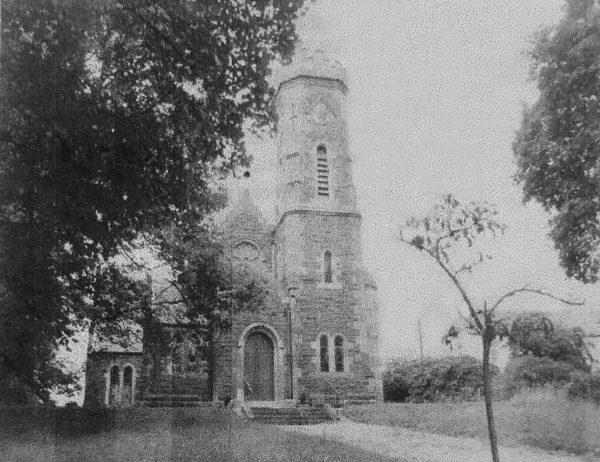
Arnsheen Church 2002
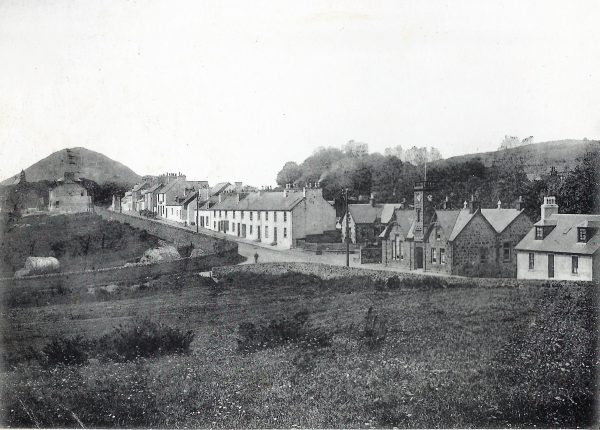
Main Street and Knockdolian, Colmonell
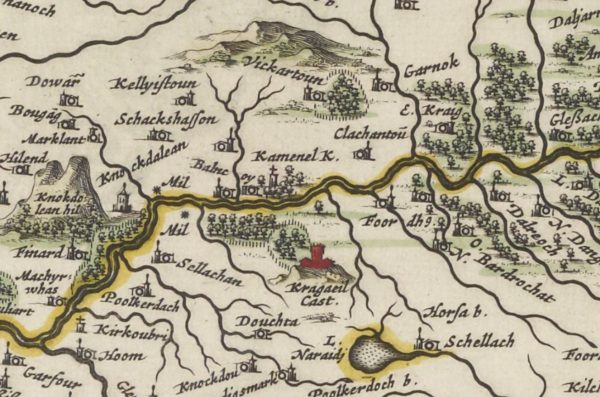
Detail from Blaeu’s Atlas of Scotland 1654. Reproduced by permission of the National Library of Scotland
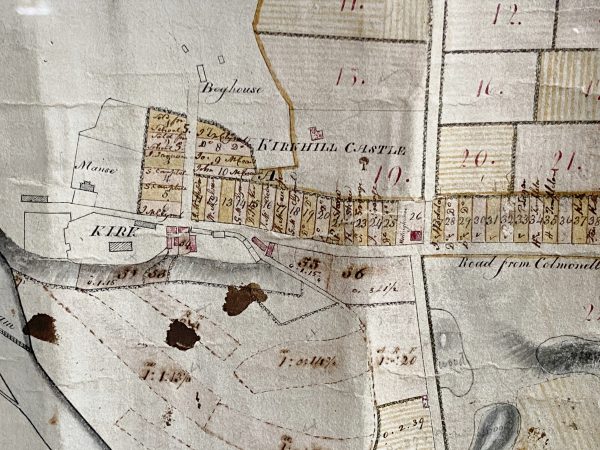
Detail from the Plan of the Lands of Kirkhill and Clachanton 1815. On loan from Hugh Sloan of Clachanton for the benefit of the community, 2010
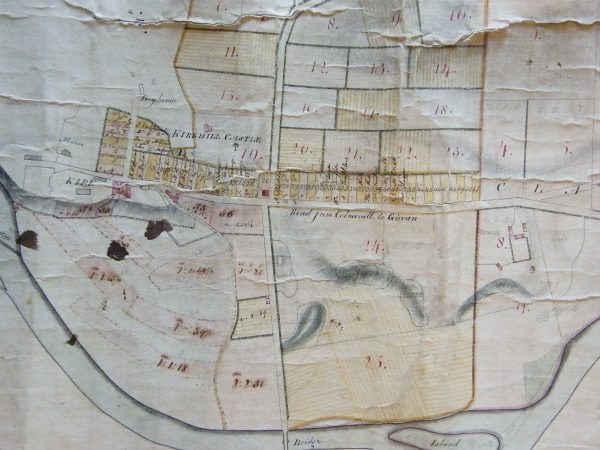
Detail from the Plan of the Lands of Kirkhill and Clachanton 1815. On loan from Hugh Sloan of Clachanton for the benefit of the community, 2010
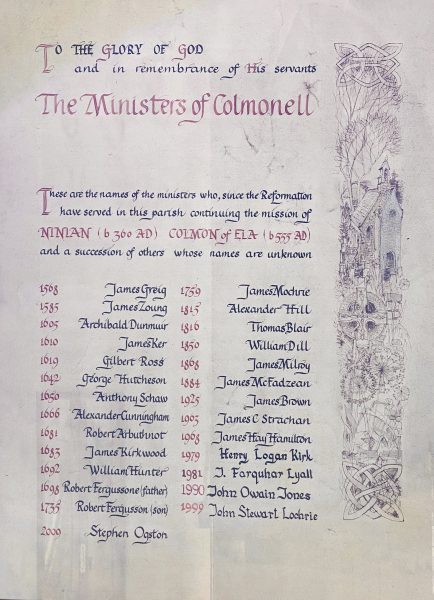
List of Ministers of Colmonell which hangs in the vestry
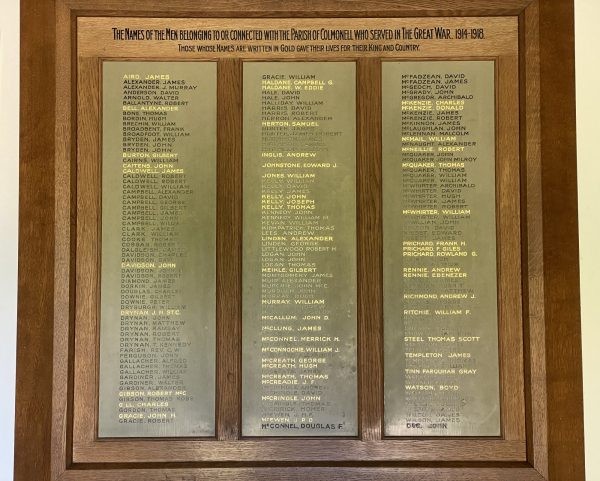
War memorial tablet in the entrance vestibule, inscribed with the Names of the Men belonging to or connected with the Parish of Colmonell who served in The Great War, 1914 – 1918
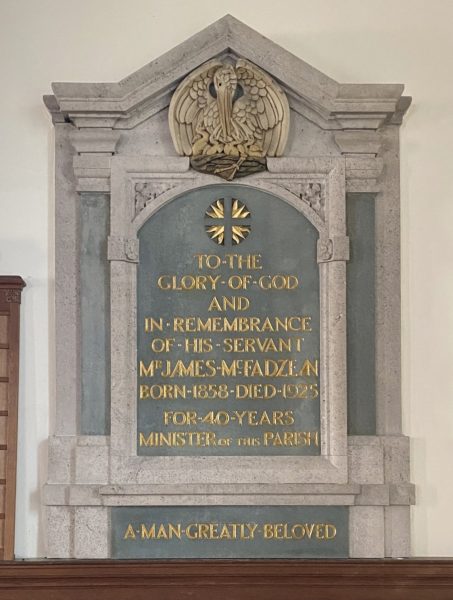
Memorial tablet on the west wall of the church

Memorial tablet on the west wall of the church
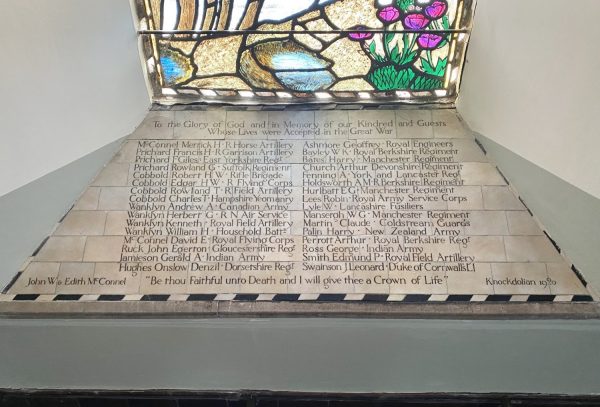
First World War Memorial on the south side of the church
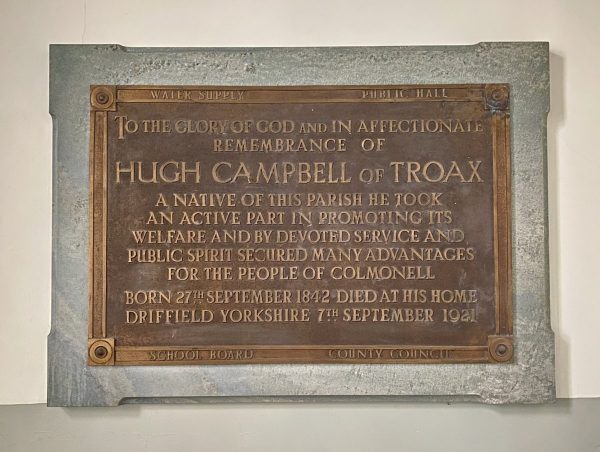
Memorial plaque on the east wall of the church
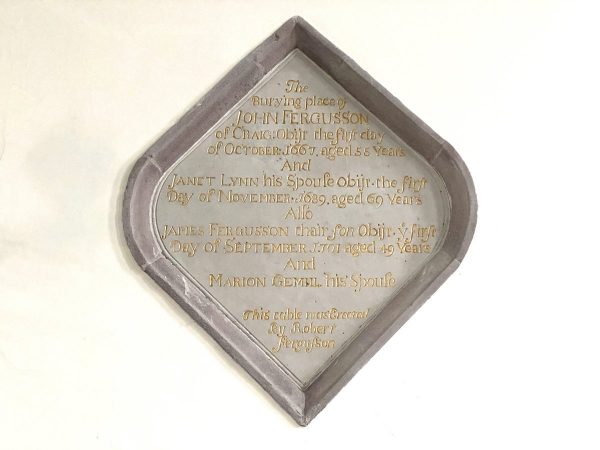
Memorial tablet on the south wall of the church
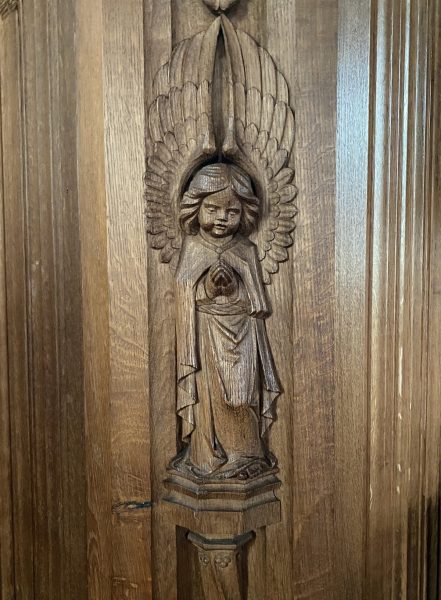
Carving on the pulpit
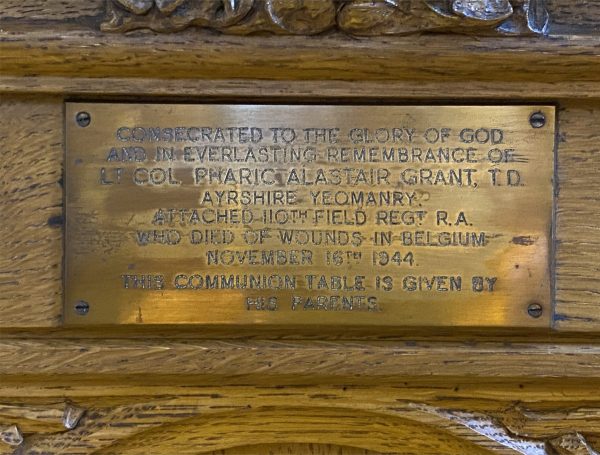
Memorial plaque on Communion table
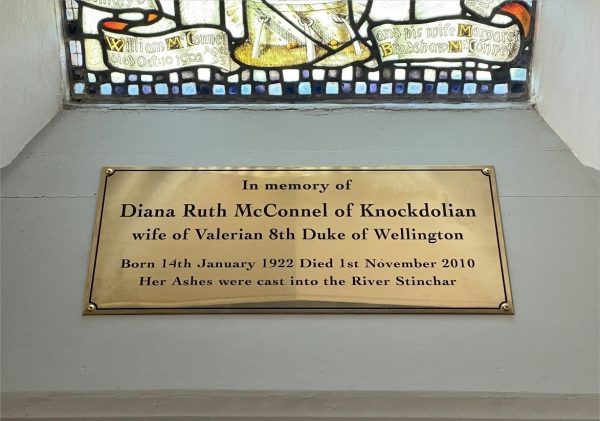
Memorial plaque on the north wall of the church
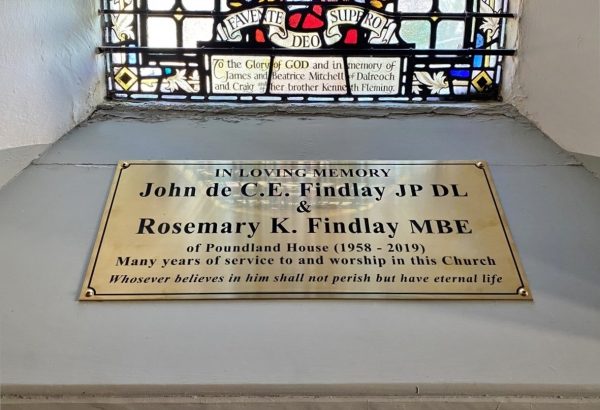
Memorial plaque on the south wall of the church
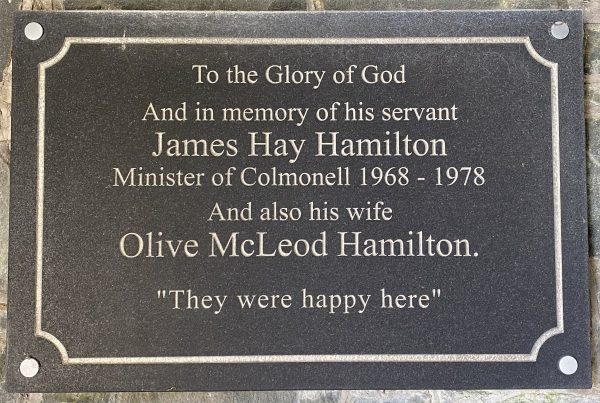
Memorial plaque in the church porch
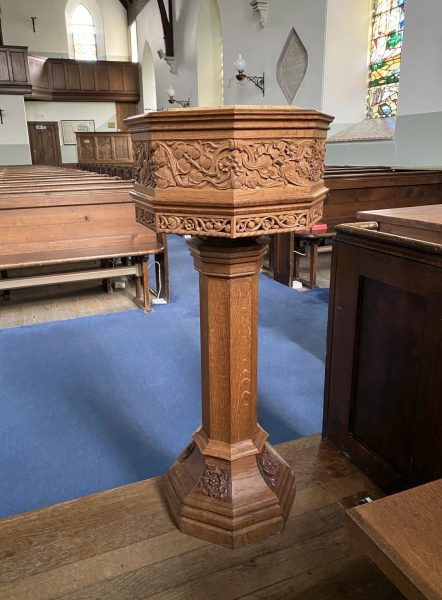
The font
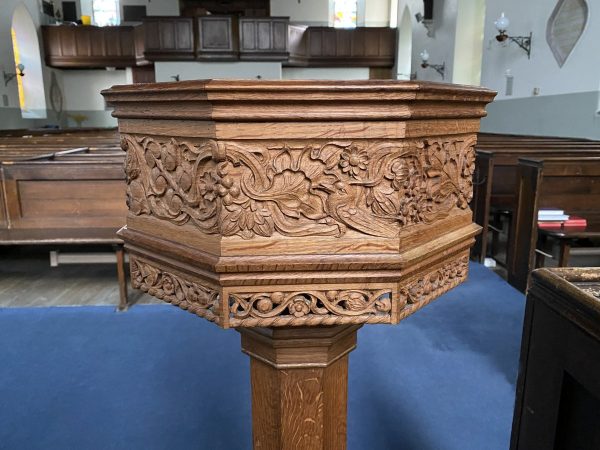
The font
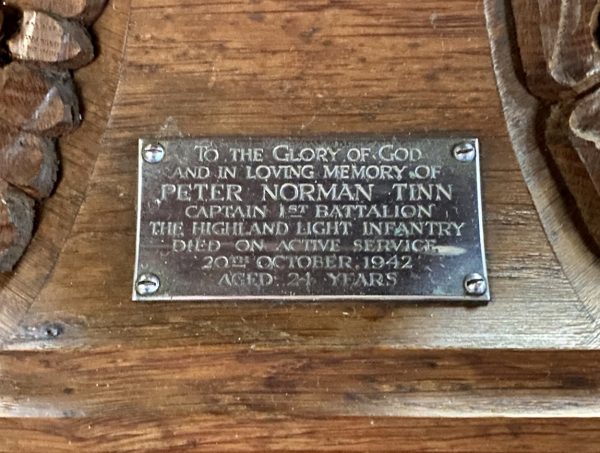
Memorial plaque at the base of the font
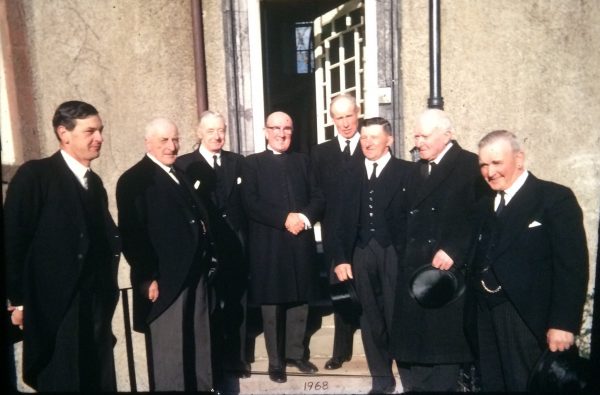
Colmonell Kirk Session at the Manse 1968
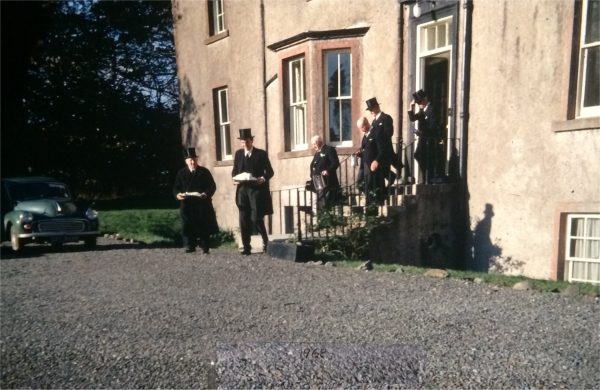
Colmonell Kirk Session processing to the Kirk for Communion 1968
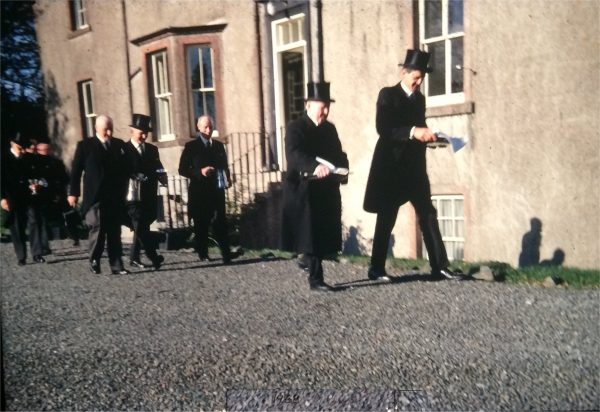
Session processing to the Kirk for Communion 1968
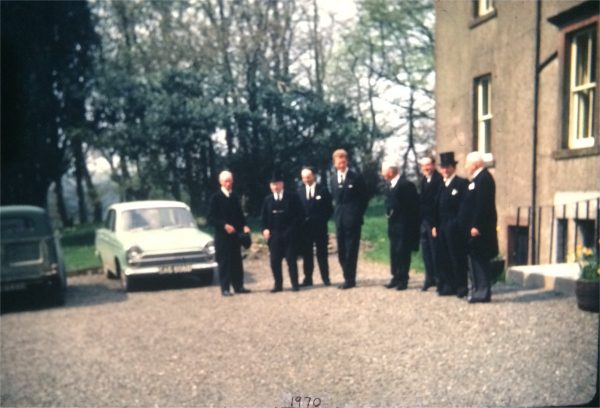
Kirk Session at the Manse 1970
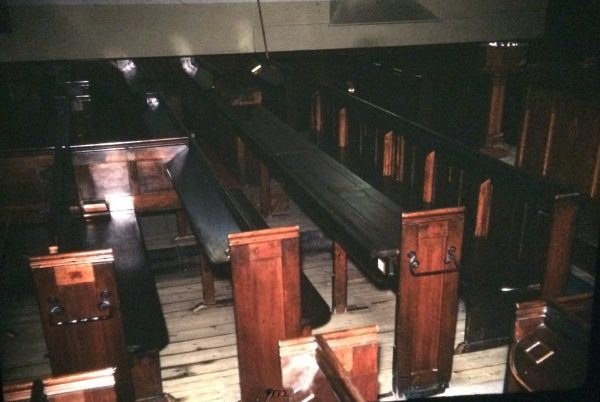
Kirk pews being turned and set for Communion 1972
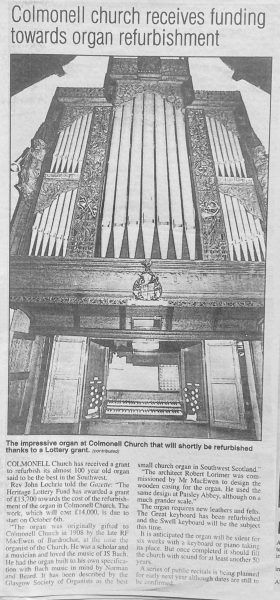
2005
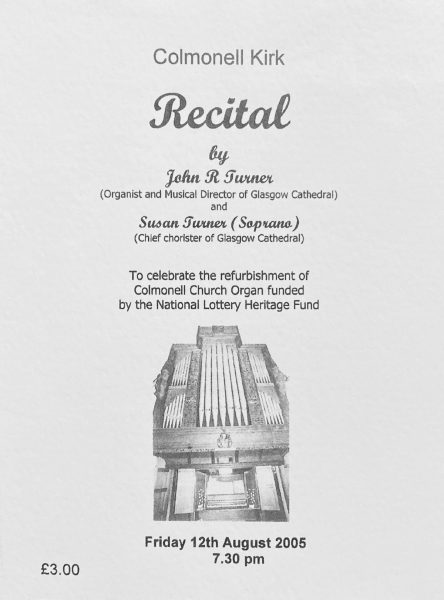
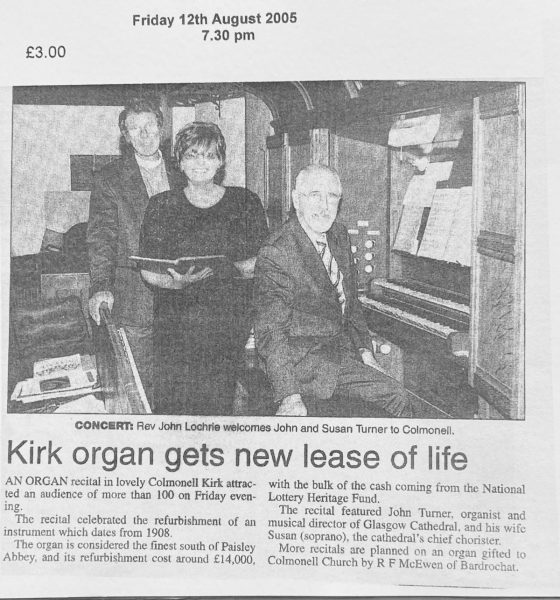
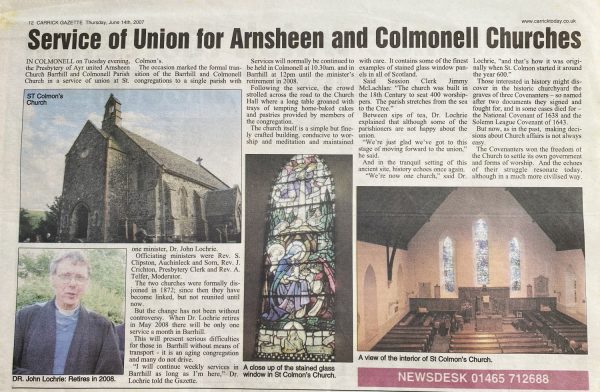
Service of Union 2007
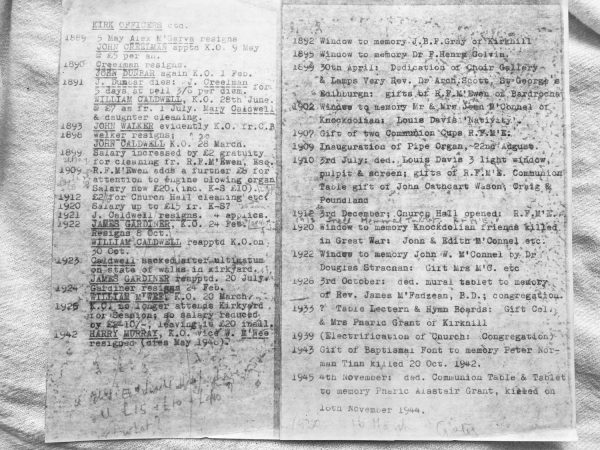
Notes of events dated from 1889-1945
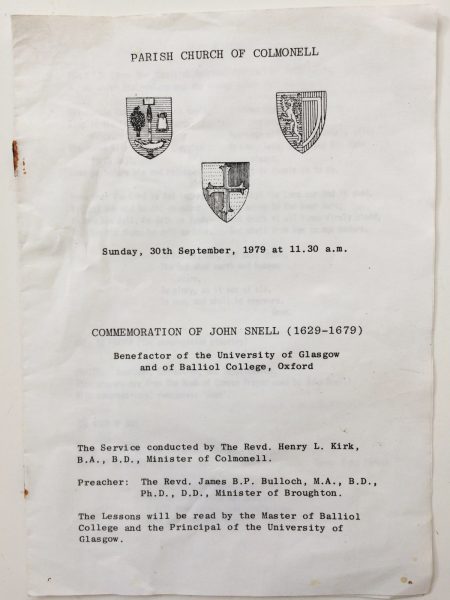
Order of Service for Commemoration of John Snell September 1979

New lamps for old – the Rev J Hay Hamilton
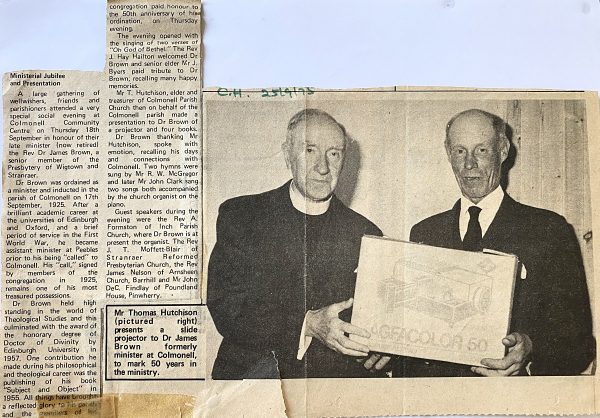
Ministerial Jubilee – Dr James Brown, minister at Colmonell 1926 – 1963. Article in Carrick Gazette 29.09.75
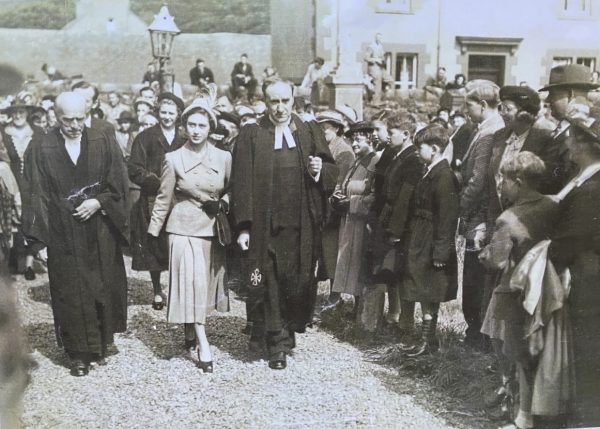
Princess Margaret walking into Colmonell Church with the minister, Dr James Brown, on the right. August 1950
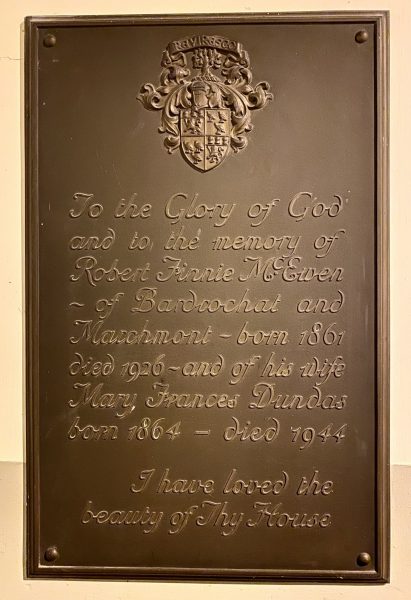
Memorial plaque to Robert Finnie McEwen 1861-1926 and his wife, Mary Dundas 1864-1944, above the organ gallery. “I have loved the beauty of Thy House”
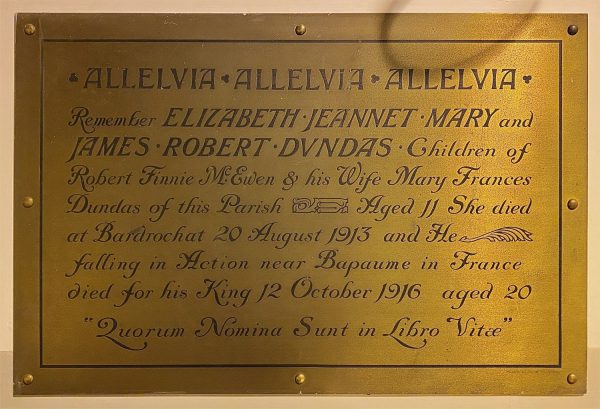
Memorial Plaque in organ gallery
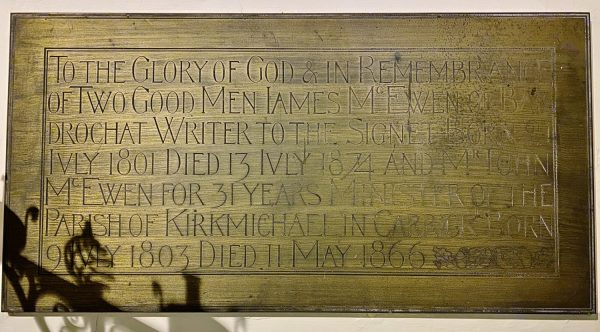
Memorial plaque in organ gallery